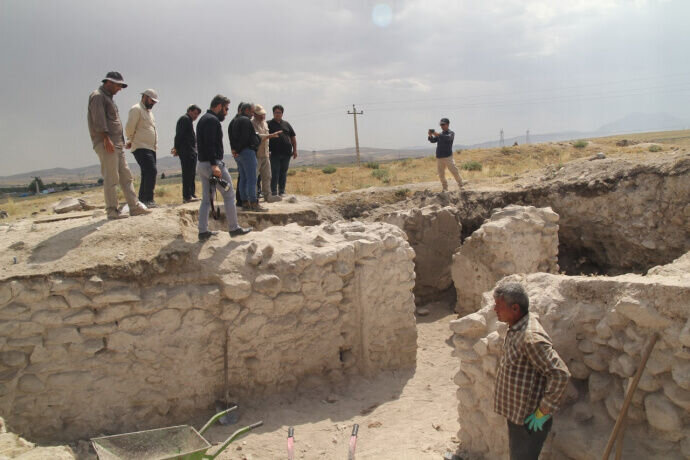Ilkhanid summer capital unearthed in northwest Iran

TEHRAN –The ancient city of Ojan, which was once the summer capital of the Ilkhanid dynasty (1256 to 1335) has been unearthed during an archaeological excavation in East Azarbaijan, in the northwest of Iran, IRNA reported on Tuesday.
A team of Iranian archeologists identified the historical city of Ojan and uncovered a part of its government citadel after ten years of survey and field exploration, said Rahim Velayati, who leads the project.
Parts of the city, which were completely buried under soil, have been unearthed and need serious protection, he noted.
In the past ten years and over four excavation seasons, the exact location of the historical city of Ojan was identified and demarcated through the use of important documents and descriptions of the city in historical and geographical texts, he explained.
Aside from the identification of four Islamic cemeteries from the Seljuk and Ilkhanid eras as well as the discovery of several historical objects within the city area, identifying the city’s government citadel and fortress, which is the largest remaining building since the founding of the city, was also very important, he added.
The city of Ojan played a very important role in the social, political, and economic life of the Azarbaijan region during the Seljuk and Ilkhanid eras. Ghazan Khan, the 13th-century ruler of Ilkhanate in Iran, built the city and named it ‘Dar al-Islam’.
Early buildings in Ojan date back to the 5th-6th centuries AH and coincided with the Seljuks. Later, the city was an administrative center of the Ilkhanids in the 7th-8th AH centuries and experienced its heyday until the late Safavid period.
Surviving architectural structures include square-shaped battlements, a government castle, some surveillance towers, enclosed walls, incised underglaze clays, underglaze paintings, and local clays without glaze from the 6th-8th centuries.
The Ilkhanid dynasty, also called Il-Khanid, was a Mongol dynasty that ruled Iran from 1256 to 1335. Il-Khan is Persian for "subordinate khan".
Hulegu, a grandson of Genghis Khan, received orders from the supreme Mongol chieftain Mongke to conquer Iran. Hulegu set out around 1253 with a Mongol army of about 130,000 men. He founded the Il-Khanid dynasty in 1256 and conquered Baghdad and all of Iran by 1258, according to Britannica.
The Il-Khanids consolidated their position in Iran and unified the region as a political and territorial entity after several centuries of fragmented rule by small dynasties. During the reign of the Il-Khanid Maumud Ghuzun (r. 1295-1304), the Il-Khanids lost all contact with the remaining Mongol chiefs in China. Mahmud Ghuzun himself embraced Sunni Islam, and his reign was a time of Iranian cultural renaissance in Iran, with scholars such as Rashid al-Din flourishing under his patronage.
Ghazan's brother Oljeitu (r. 1304-16) converted to Shia Islam in 1310. Oljeitu's conversion caused great unrest, and when he died in 1316, the civil war was imminent. His son and successor, Abu Sa'id (r. 1317-35), converted to Sunni Islam and was thus able to prevent a war.
During Abu Sa'id's reign, however, factional disputes and internal unrest continued to spread. Abu Sa'id died without leaving an heir, and with his death, the unity of the dynasty was broken. Thereafter, various Il-Khanid princes ruled parts of the dynasty's former territory until 1353.
ABU/AM
